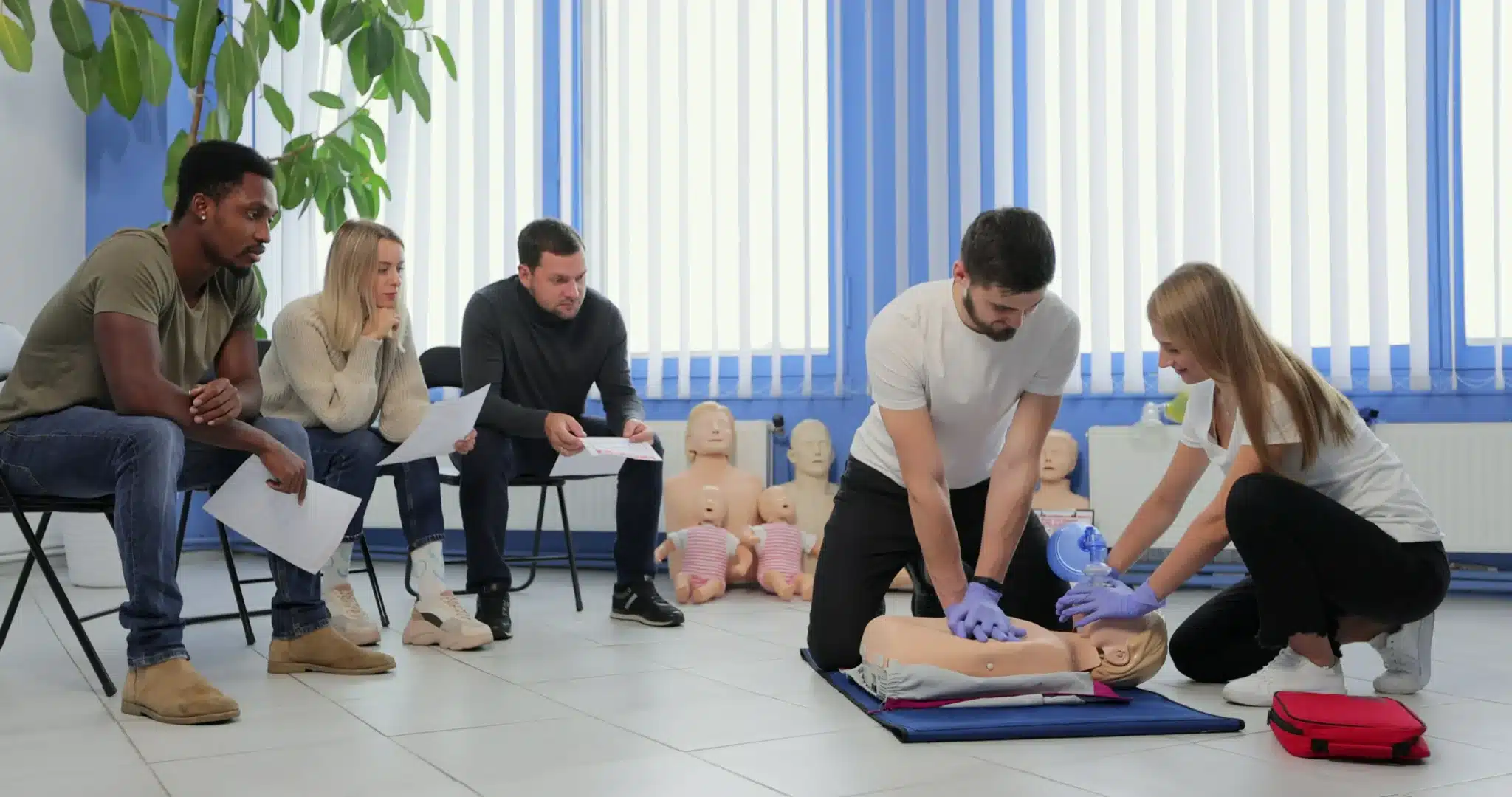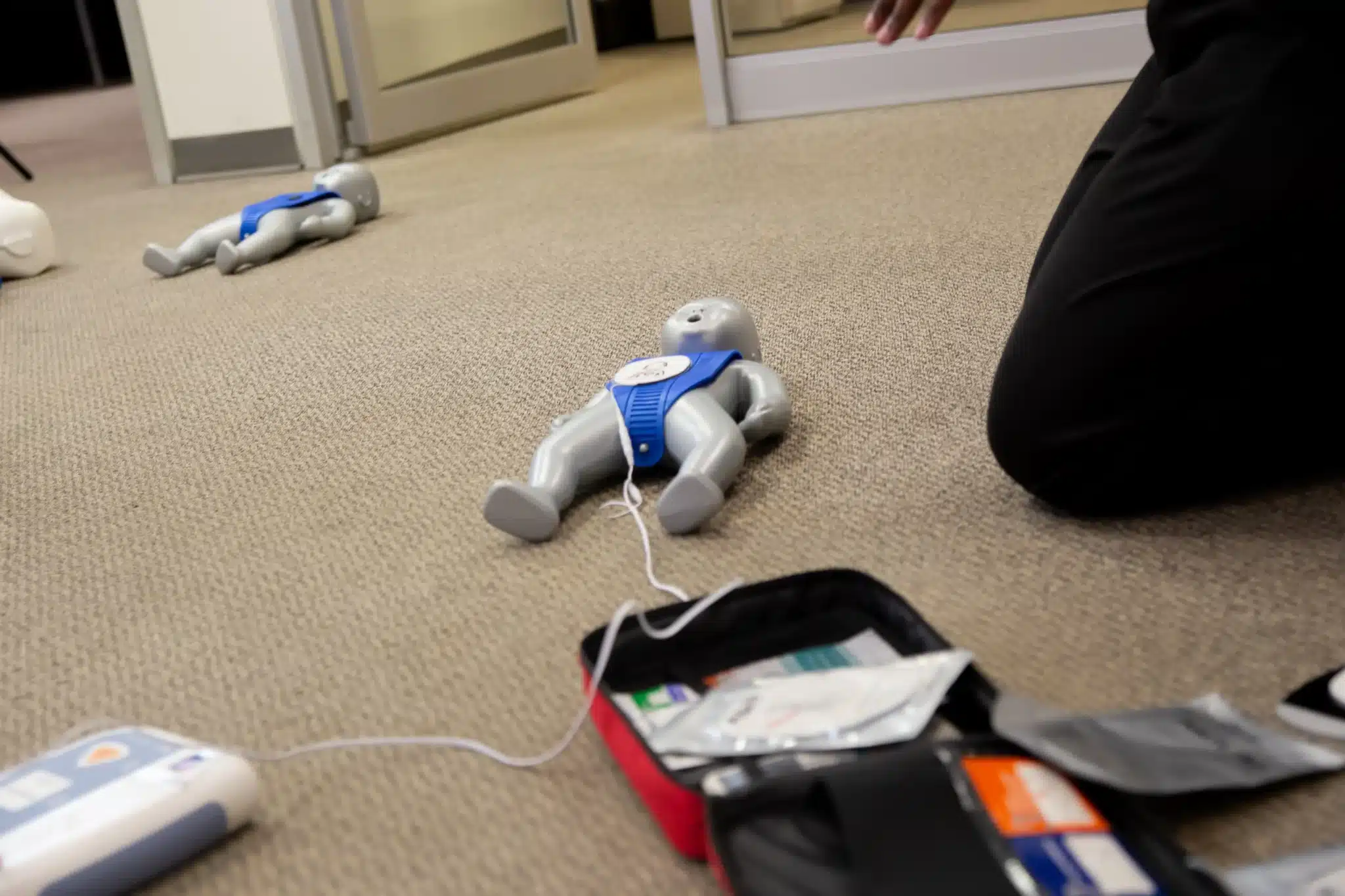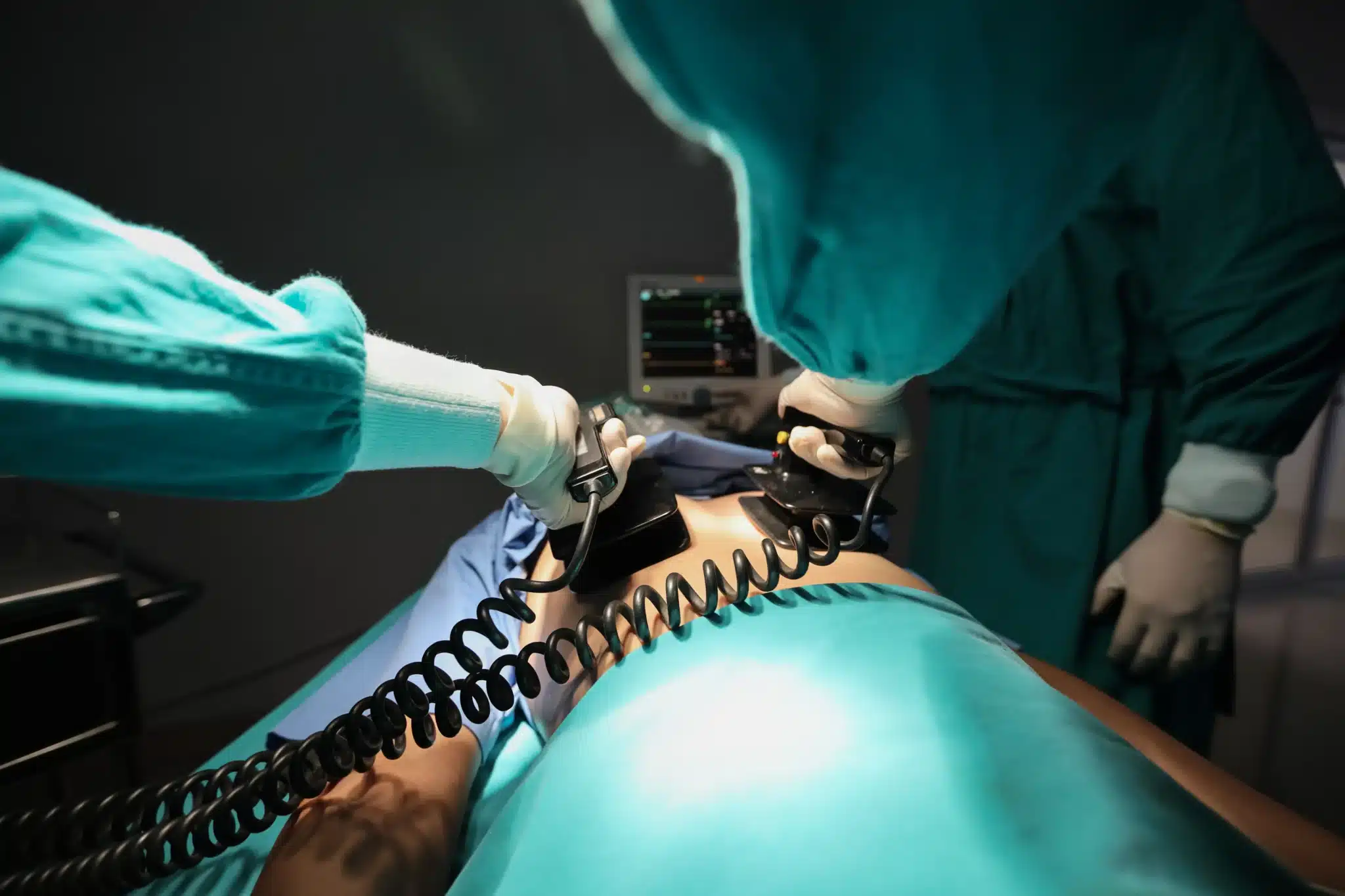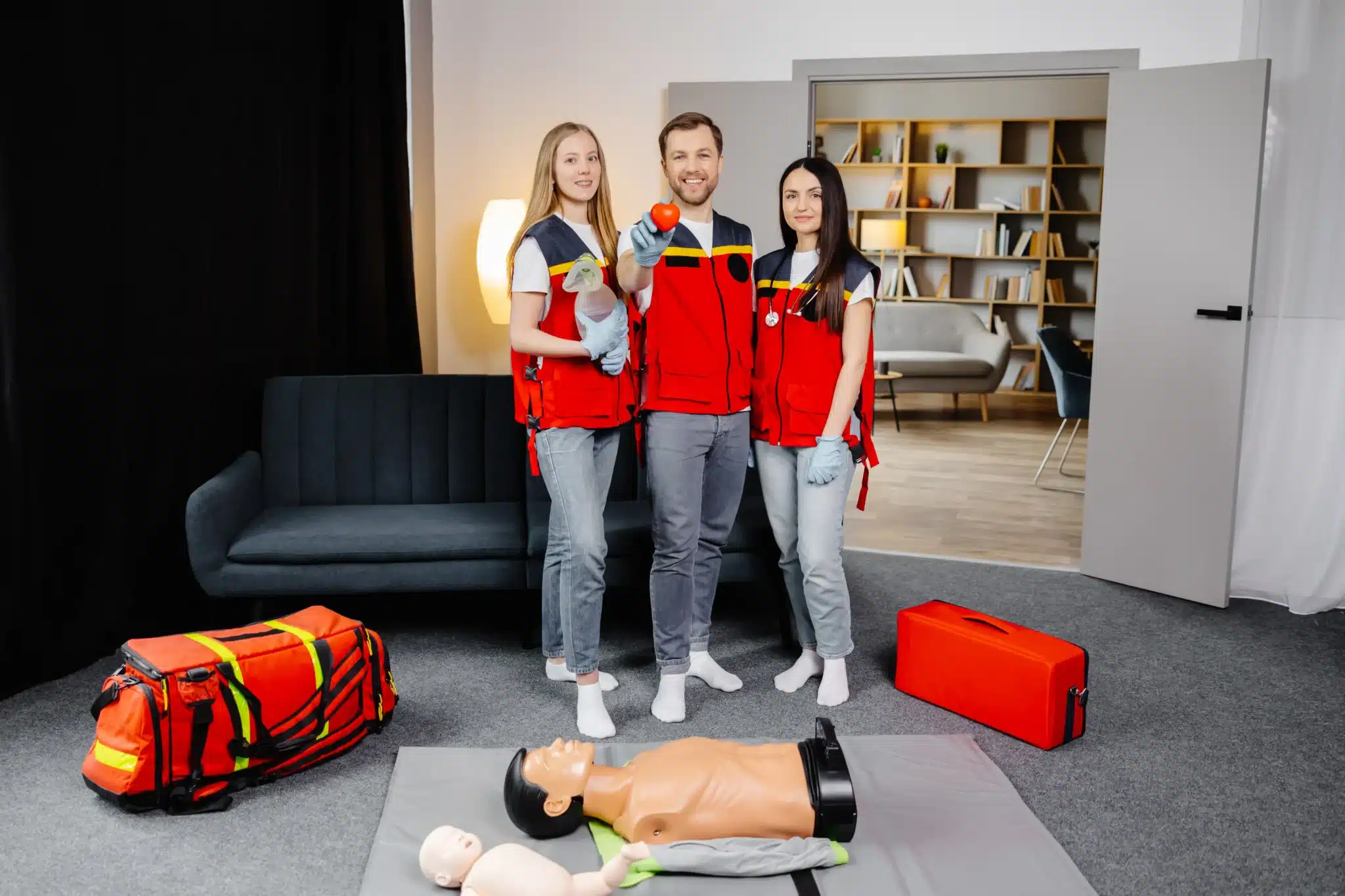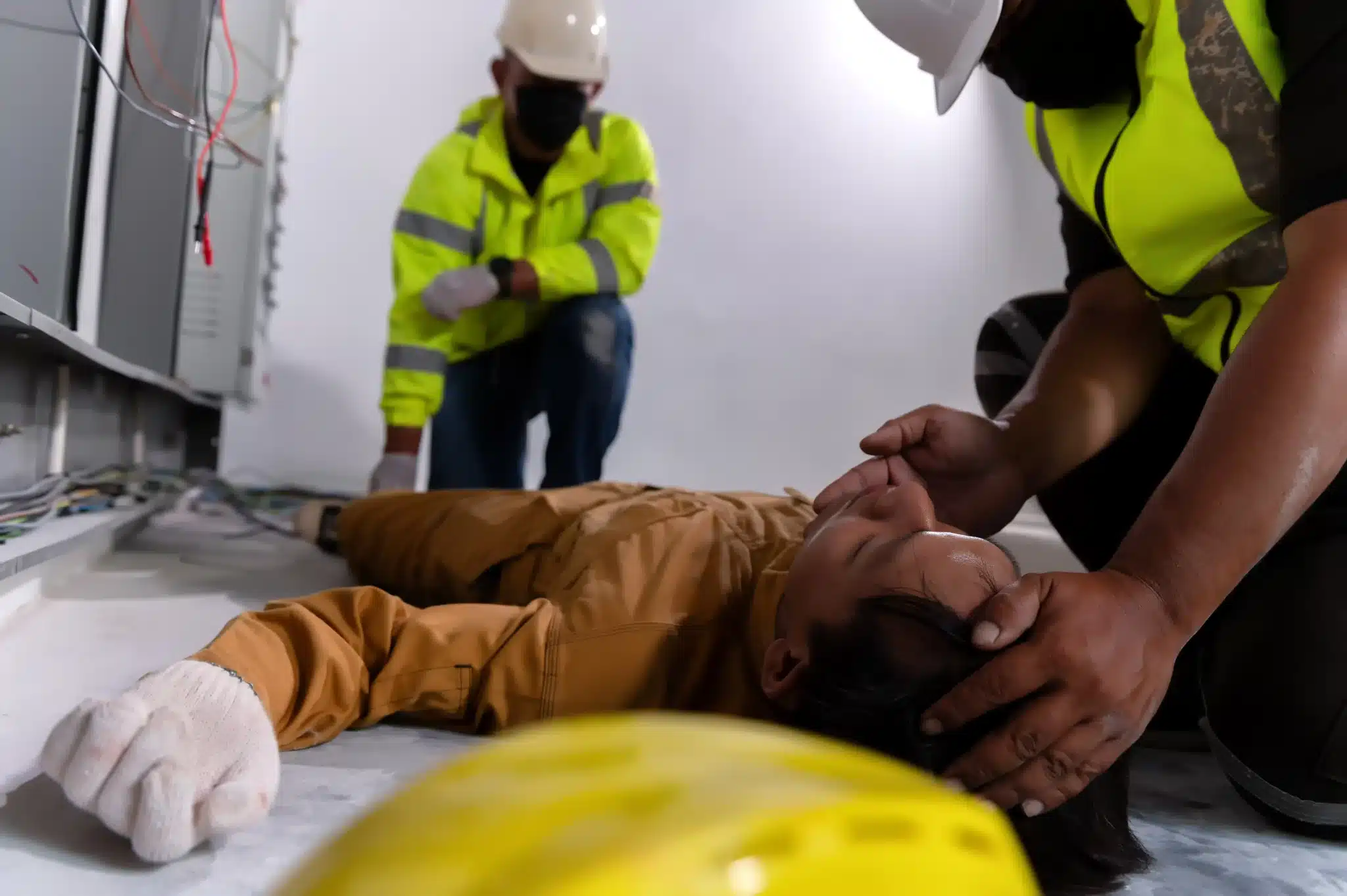Running a restaurant in Fremont involves juggling numerous responsibilities, from managing staff and inventory to ensuring customer satisfaction. But amidst the daily hustle, are you prepared for the unexpected? A medical emergency can happen anytime, anywhere, and having CPR-trained staff can be the difference between life and death. CPR for restaurant employees in Fremont provides your team with the skills and confidence to respond effectively in critical situations, protecting your customers and your business. This article will guide you through the importance of CPR training, the options available in Fremont, and how to integrate it seamlessly into your restaurant’s safety protocols.
Key Takeaways
- Prioritize safety with CPR training: Equipping your restaurant staff with CPR skills creates a safer environment for everyone and demonstrates a commitment to customer and employee well-being.
- Explore convenient training options: Find a CPR certification program that suits your team’s needs and schedule, considering factors like cost, format (in-person or online), and course content.
- Maintain staff preparedness: Develop a comprehensive emergency plan, conduct regular drills, and schedule refresher courses to ensure your team can respond effectively to emergencies.
Why Restaurant Employees Need CPR Training
In the fast-paced restaurant environment, emergencies can arise unexpectedly. From choking incidents to sudden cardiac arrest, your staff needs to be prepared to respond quickly and effectively. CPR training empowers your team to handle these critical situations, potentially saving lives and creating a safer dining experience for everyone. CPR training equips employees with the skills and knowledge to respond effectively in an emergency, creating a safer working environment.
Having CPR-trained staff demonstrates a commitment to customer safety. Diners are more likely to choose restaurants that prioritize their well-being. Knowing that trained professionals are on hand can provide peace of mind, especially for families with young children or those with existing health conditions. This focus on safety can enhance your restaurant’s reputation and build trust within the community.
Beyond the immediate response, CPR training offers valuable benefits for your staff. It builds confidence and empowers them to take charge in stressful situations. This training can also reduce your restaurant’s liability in the event of a medical emergency. By investing in CPR certification, you’re not only protecting your customers but also showing your employees that you value their well-being. This can lead to increased job satisfaction and a stronger sense of teamwork. A restaurant can reduce its liability and ensure customer safety when its employees are trained in first aid and CPR. This investment in your team can pay dividends in improved morale, reduced turnover, and a positive work environment.
CPR Training Options for Fremont Restaurant Staff
Finding the right CPR training for your restaurant staff in Fremont is easier than you think. With various options, from traditional in-person classes to flexible online courses, you can choose the format that best suits your team’s needs and schedules.
In-Person Training
In-person CPR training offers a hands-on learning experience, allowing your staff to practice techniques under the guidance of a certified instructor. This direct interaction provides immediate feedback and allows trainees to ask questions and clarify anything in real-time. For those who learn best in a traditional classroom setting, in-person training offers a structured and supportive environment. Fremont CPR Classes offers various American Heart Association (AHA) courses, including BLS, ACLS, and First Aid, prioritizing high-quality instruction and convenient scheduling. They also offer group discounts, making it cost-effective for training your entire team.
Online Certification
Online CPR certification provides a flexible alternative for busy restaurant staff. These courses allow your team to complete the training at their own pace, fitting it around their work schedules and personal commitments. Many online programs incorporate videos and interactive modules to make learning engaging. Online certification is often paired with an in-person skills check, ensuring trainees demonstrate competency in essential techniques. This blended approach combines online learning’s convenience with in-person training’s practical application. Cintas First Aid & Safety offers online options with in-person skills checks.
Local Training Providers
Several reputable training providers offer CPR certification in the Fremont area. Here are a few options:
Fremont CPR Classes
Fremont CPR Classes offers flexible courses designed for various learning styles and schedules. They provide comprehensive training in CPR, BLS, ACLS, and First Aid, ensuring your staff is well-prepared for emergencies. Their focus on high-quality instruction and customer service makes them a popular choice for local businesses.
American Red Cross
The American Red Cross is a nationally recognized provider of CPR training. Their CPR/AED training and certification emphasizes hands-on practice to build confidence in applying learned skills. The Red Cross offers various course formats, including in-person and blended learning.
Cintas First Aid and Safety
Cintas provides a comprehensive range of safety training courses, including CPR, First Aid, and other essential safety certifications. They offer both classroom and online formats. Cintas focuses on ensuring employees receive thorough training to handle workplace emergencies effectively.
Heart Start CPR
Heart Start CPR offers online and onsite training classes with certification in CPR, First Aid, BLS, ACLS, and PALS. They prioritize a low-stress, engaging learning environment, making the training positive and effective.
SureFire CPR
SureFire CPR specializes in training restaurant staff, equipping them with the skills to respond effectively during emergencies. Their targeted approach ensures the training is relevant to the specific challenges and scenarios faced in the restaurant industry.
CPR Training Costs in Fremont
CPR training is an investment in safety, and understanding the costs involved helps you plan effectively. Several factors influence the final price of your certification.
Factors Affecting Cost
CPR certification costs depend on the type of course and the training provider. A basic CPR course will typically be less expensive than more advanced certifications like ACLS (Advanced Cardiovascular Life Support) or PALS (Pediatric Advanced Life Support). The length of the course also matters—longer, more comprehensive courses generally cost more. Finally, the training organization itself plays a role in setting prices. For a comprehensive list of CPR providers in Northern California, check out this directory.
Group Discounts
For restaurants looking to train multiple staff members, group discounts can significantly lower the cost per person. Fremont CPR Classes offers competitive pricing and provides group discounts on many courses, from basic CPR training to specialized certifications. This can be a smart way to equip your entire team with life-saving skills.
Current Promotions
It’s always a good idea to check for current promotions or discounts. Training providers often run special offers, especially for groups. Contact Fremont CPR Classes directly to inquire about any ongoing promotions that could make your training even more affordable. They are known for their competitive pricing and high-quality instruction. You can also explore their BLS certification course for more information on pricing and course content.
Benefits of CPR Training for Restaurants
Having CPR-trained staff isn’t just a smart move—it’s a vital part of running a responsible restaurant. It protects your customers, builds a stronger team, and safeguards your business. Let’s explore the key advantages:
Improve Customer Safety
Diners want to feel safe. Knowing your team can handle emergencies, from a choking incident to a sudden cardiac arrest, provides an added layer of reassurance. CPR-trained staff can quickly respond to medical crises, potentially saving lives and minimizing the impact of health emergencies. This preparedness demonstrates a commitment to customer well-being that builds trust and loyalty. A safer environment naturally encourages repeat business and positive word-of-mouth referrals.
Build Employee Confidence
Equipping your team with CPR training empowers them to take charge in critical situations. This confidence translates to a more positive and proactive work environment. Employees feel better prepared to handle emergencies, reducing anxiety and fostering a sense of teamwork. They become valuable assets, ready to protect both colleagues and customers. This increased confidence can also improve job satisfaction and reduce employee turnover.
Reduce Liability
CPR training can significantly reduce your restaurant’s liability in medical emergencies. By demonstrating a commitment to safety and providing staff with the skills to respond effectively, you mitigate potential legal risks. When your team knows how to administer first aid and CPR, it shows you’ve taken proactive steps to protect your patrons, minimizing the likelihood of lawsuits and negative publicity. This proactive approach can also lead to lower insurance premiums, saving your business money in the long run.
Create a Safer Dining Experience
A safe dining experience is about more than just serving quality food. It’s about creating an environment where customers feel secure and protected. CPR training contributes to a culture of safety, demonstrating that you prioritize the well-being of everyone in your restaurant. This commitment fosters a positive atmosphere for both staff and customers, enhancing the overall dining experience. A safe and welcoming environment attracts customers and encourages them to relax and enjoy their meal, leading to increased customer satisfaction and positive reviews.
Getting CPR Certified: A Guide for Restaurant Workers
Knowing the ins and outs of CPR certification is important for both restaurant owners and their staff. This section covers the key details you need to know.
Certification Duration
CPR certifications are typically valid for two years. This standard timeframe exists because research shows CPR skills and knowledge can decline over time. Staying current with the latest guidelines and techniques ensures you can respond effectively during a real emergency. It’s always a good idea to keep your skills fresh.
Renewing Your Certification
It’s generally recommended to renew your CPR certification within 30 days of its expiration date. If your certification lapses for more than 30 days, you’ll likely need to retake the entire course rather than a refresher. This ensures you rebuild your skills and knowledge to the required level. The renewal process is straightforward and designed to keep your skills sharp, so you can handle emergencies with confidence. Check with your local training provider, such as Fremont CPR Classes, for specific renewal policies.
Staying Compliant with Regulations
Providing CPR training for your restaurant staff isn’t just about safety—it also demonstrates a commitment to customer well-being and can help your restaurant comply with health and safety regulations. CPR and first-aid certifications are a smart investment that protects everyone, from your staff to your diners, and can even enhance your restaurant’s reputation. It’s a win-win for everyone involved.
Essential CPR Skills for Restaurant Staff
This section covers the essential CPR skills all restaurant staff in Fremont should know. It’s crucial to remember that proper training from a certified provider like Fremont CPR Classes is essential to perform these skills correctly. We’ll cover the basics here, but hands-on instruction is key. Consider this a starting point for your journey toward becoming a more confident and prepared member of your restaurant team.
Recognize Cardiac Arrest
Quick recognition of cardiac arrest is the first step in a life-saving response. Look for a sudden loss of responsiveness, no breathing or only gasping, and no pulse. A person experiencing cardiac arrest may also unexpectedly lose consciousness. Early recognition and activating the emergency response system are vital. Call 911 immediately if you suspect someone is experiencing cardiac arrest. The American Heart Association offers more information on recognizing and responding to cardiac arrest.
Perform Chest Compressions
Chest compressions are the cornerstone of CPR. They circulate blood to vital organs, keeping the person alive until professional help arrives. Proper technique involves placing your hands interlocked in the center of the chest, keeping your arms straight, and pushing down hard and fast at a rate of 100-120 compressions per minute. Aim for consistent depth and recoil, allowing the chest to fully rise between compressions. CPR123 discusses how proper CPR training improves emergency response and creates a safer environment.
Use an AED
An automated external defibrillator (AED) can significantly increase the chances of survival during cardiac arrest. These devices are user-friendly, providing voice prompts to guide you through each step. Quickly locate the AED, turn it on, and follow the instructions. The AED will analyze the heart rhythm and advise whether a shock is needed. Remember, speed is critical when using an AED. ABC Safety Solutions shares a real-life example of how AED use in a restaurant setting made a critical difference.
Handle Choking
Choking is a common emergency in restaurants. Learn to recognize the universal sign for choking (clutching the throat) and how to perform the Heimlich maneuver. This technique uses abdominal thrusts to dislodge the obstruction. For choking infants, a combination of back blows and chest thrusts is recommended. Knowing how to handle choking can prevent a life-threatening situation. For comprehensive training, including choking rescue techniques, contact Fremont CPR Classes. We offer a range of courses to equip you with the skills to respond effectively to various emergencies.
Legal Considerations for CPR-Trained Restaurant Staff
This section covers legal considerations for CPR-trained restaurant staff, focusing on Good Samaritan laws and liability protection. It provides general information and shouldn’t replace professional legal advice. Always consult a legal expert for guidance specific to your situation.
Good Samaritan Laws
Good Samaritan laws protect people who voluntarily help someone injured or in danger during an emergency. These laws encourage bystanders, including restaurant staff, to assist without fearing legal action. Most states, provinces, and countries have Good Samaritan laws protecting those who use CPR or an AED in a life-saving attempt. This protection typically applies even if your training isn’t current. This legal safeguard is crucial for restaurant employees who might encounter emergencies at work. Knowing you’re protected can empower you to act quickly and confidently when every second counts.
Liability Protection
Good Samaritan laws generally shield those who volunteer assistance in emergencies from lawsuits, provided they act reasonably and within their training. This means CPR-trained restaurant employees responding to an emergency are typically protected from liability if they act in good faith and avoid gross negligence. These laws encourage people to help others without worrying about legal consequences, fostering safer public spaces, including restaurants. For more information on Good Samaritan laws, review this helpful resource. Remember, acting reasonably and within the scope of your training is essential. This knowledge allows you to focus on providing aid when needed.
Integrate CPR Training into Restaurant Safety
CPR training is a vital part of any restaurant’s safety plan. It empowers your staff to respond effectively to emergencies, creating a safer environment for everyone. But simply having trained employees isn’t enough. To truly integrate CPR training into your restaurant’s safety culture, you need to establish clear procedures and maintain staff preparedness.
Create an Emergency Plan
A well-defined emergency plan provides a roadmap for your team during a crisis. This plan should clearly outline the steps to take in various medical emergencies, including cardiac arrest, choking, and allergic reactions. Specify roles for each staff member, such as who calls 911, who retrieves the Automated External Defibrillator (AED), and who administers first aid or CPR. Post the emergency plan in a visible location and review it regularly with your staff. A prepared restaurant can reduce its liability and ensure customer safety when its employees know how to recognize and respond to medical emergencies like heart attacks and strokes. Contact Fremont CPR Classes to learn more about implementing CPR and first aid training in your restaurant.
Schedule Regular Drills and Refresher Courses
Regular drills are essential to reinforce training and ensure your team can execute the emergency plan effectively. Simulate different emergency scenarios and have staff members practice their assigned roles. This hands-on experience builds confidence and improves response times in real emergencies. Beyond drills, schedule refresher CPR courses for your staff. CPR guidelines and best practices can change, and refresher courses keep your team up-to-date. These courses also reinforce learned skills and demonstrate your commitment to employee and customer well-being. Providing CPR training shows you care about your employees’ safety and invest in their well-being, creating a positive work environment. Consider exploring group discounts for your restaurant staff to make training more accessible. By creating a culture of preparedness, you not only equip your staff with life-saving skills but also foster a sense of responsibility and teamwork.
Choose the Right CPR Training for Your Restaurant
Finding the right CPR training for your restaurant staff in Fremont doesn’t have to be overwhelming. By taking a practical, step-by-step approach, you can ensure your team is prepared for emergencies and create a safer environment for everyone.
Assess Your Needs
First, think about your restaurant’s specific requirements. How many employees need training? Do you have any staff members with physical limitations that might require modified training techniques? Consider your budget and how much you can reasonably invest in CPR training. Providing CPR training for restaurant staff offers numerous benefits, from a more effective emergency response to a safer workplace. It’s a smart investment that shows you’re committed to the well-being of both your employees and your customers.
Compare Training Options
Next, explore the different CPR training options available in Fremont. Look at programs offered by various providers, including the American Red Cross and independent training centers like Fremont CPR Classes. Compare the curriculum, course length, and certification types. Some programs may focus on basic CPR and first aid, while others offer more advanced certifications like BLS or ACLS. The cost of CPR training can vary, so it’s wise to get quotes from a few different providers. Also, check if providers offer group discounts, which can be a cost-effective solution if you’re training a large team.
Plan and Schedule Training
Once you’ve chosen a training program, it’s time to plan and schedule the training sessions. Fremont CPR Classes is known for its flexible scheduling and convenient location, making it a practical choice for busy restaurants. Think about the best way to minimize disruption to your restaurant’s operations. You might consider scheduling training during slower periods or staggering sessions so that not all your staff are out at once. Hands-on practice is a critical component of effective CPR training, so make sure the program you choose emphasizes this. This practical experience will build your team’s confidence and prepare them to respond effectively in a real emergency. Finally, remember that CPR certification requires periodic renewal. Factor this into your long-term planning and create a system for tracking certifications and scheduling refresher courses. If you have questions or want to explore options, reach out—contact us today.
Related Articles
- CPR Certification in San Jose: A Complete Guide
- CPR Training in Newark: Your Complete Guide – Fremont CPR Classes
- Why CPR Matters in Healthcare – Fremont CPR Classes
- Workplace CPR and First-Aid Training Benefits
- Pediatric CPR & First-Aid Training in Fremont – Fremont CPR Classes
Frequently Asked Questions
How often should my restaurant staff renew their CPR certification? CPR certifications are typically valid for two years. It’s generally recommended to renew within 30 days of the expiration date to avoid retaking the entire course.
What are the legal implications for my staff performing CPR in an emergency? Good Samaritan laws generally protect individuals who voluntarily provide aid in emergencies, including CPR. These laws shield responders from liability as long as they act reasonably within the scope of their training.
What key skills should restaurant employees learn during CPR training? Essential skills include recognizing cardiac arrest, performing chest compressions, using an AED, and handling choking incidents. A comprehensive training course will cover all of these aspects.
How can I integrate CPR training into my restaurant’s overall safety plan? Develop a clear emergency plan outlining staff roles and procedures during medical emergencies. Conduct regular drills to reinforce training and schedule refresher courses to keep skills current.
What factors should I consider when choosing a CPR training program for my restaurant? Consider your restaurant’s specific needs, such as the number of employees needing training and any physical limitations they may have. Compare different training options, including curriculum, course length, certification types, cost, and the availability of group discounts. Also, consider the program’s scheduling flexibility and emphasis on hands-on practice.


